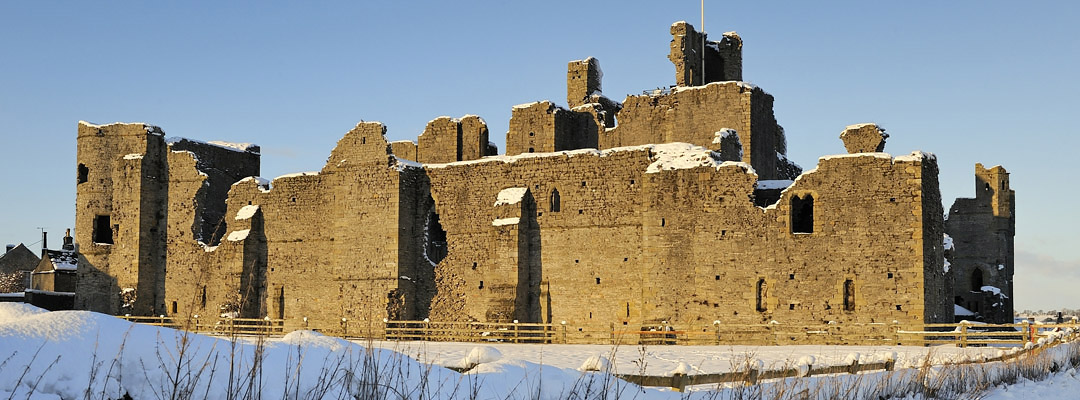Magic, Medicine and the Middleham Jewel
How a 15th-century amulet discovered at Middleham Castle in North Yorkshire reveals the complex relationship between superstition and theology, spell-casting and prayer, in late medieval England.

FOUND JEWEL
Someone must have been very sorry to lose the Middleham Jewel. Rediscovered in 1985 near Middleham Castle by a metal-detectorist – who at first thought it was a powder-compact – the jewel is an exquisite example of a London goldsmith’s work of about 1450–75.
But it was also, more disastrously for the loser, an amulet providing both religious and magical protection.
On the outward-facing side of the 6.4 centimetre high, lozenge-shaped jewel is a beautiful engraving of the Crucifixion. On the inward face is a Nativity scene above an image of the Lamb of God.
A Latin extract from the Mass – ‘Behold the Lamb of God, that takest away the sins of the world … Have mercy upon us’ – frames the Crucifixion scene, and around the Nativity stand 15 tiny images of saints.
MAGIC MARKINGS
All this is conventional religious imagery. But other elements of the Jewel inhabit the shadowy borderline between medieval religion, magic and medicine.
The blue sapphire set above the Crucifixion was believed not only to enhance prayers but also to cure ulcers, poor eyesight, headaches and stammers. And the extract from the Mass is followed by two ‘magic words’: Tetragrammaton, the Latinised Hebrew name of God, and Ananizapta, a charm against epilepsy or ‘the falling sickness’.
Though physicians like John of Gaddesden (1280–1361) had begun to point towards physical causation, this terrifying illness was still generally attributed to demonic possession. So it was best countered with prayers to saints like Valentine, because his name resembled the Old German fal net hin – ‘don’t fall down’ – or charms like Ananizapta, which is engraved on the Middleham Jewel.
FASHION AND FUNCTION
The Jewel was clearly made for a great lady. It is the only survivor of similarly shaped adornments frequently depicted as being worn on necklaces by English noblewomen in the late 15th century.
No mere fashion accessory, though, the imagery-rich Jewel was once also packed with something doubtless regarded as still more valuable: a holy relic. Its back slides open to reveal four fragments of gold-embroidered silk. What these are, or whether they were its original contents, remains a mystery.
It is likely, however, that the Jewel also protected its wearer against the dangers of childbirth, that greatest hazard to medieval women of all classes. Certainly the Nativity imagery on the intimate, ‘inward’ face of the Jewel points that way, together with several saintly ‘childbirth-helpers’ among the figures that frame it.
WHOSE JEWEL?
We will probably never know for certain who owned this belt-and-braces combination of religion and magic, though she must have been very rich to commission such a treasure.
Perhaps the best candidate, as the historian John Cherry has noted, is Anne Beauchamp (1426–92), widow of ‘Warwick the Kingmaker’ and mother-in-law of Richard III. Renowned for her enthusiastic and helpful attendance at various childbirths, Anne was almost certainly at Middleham Castle in 1473 when Prince Edward, Richard’s short-lived only son, was born.
An exact replica of the Jewel is now back at Middleham. The original is displayed in the Yorkshire Museum, York.
By Charles Kightly
